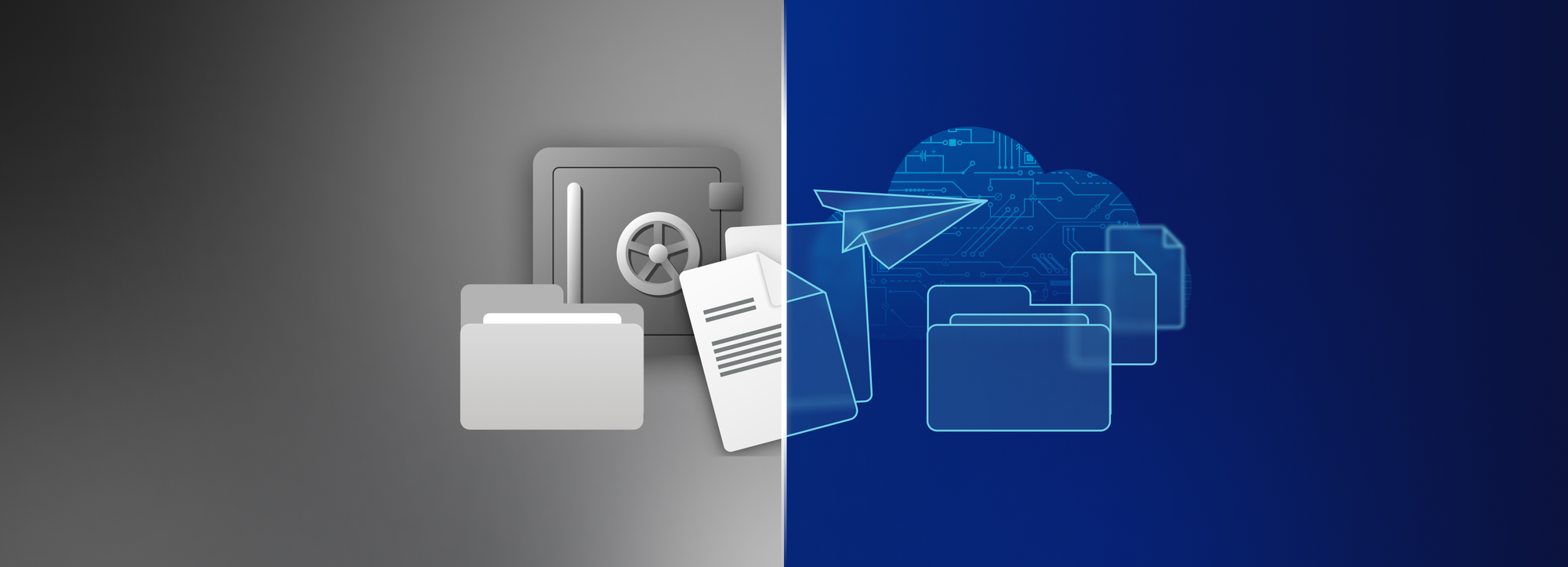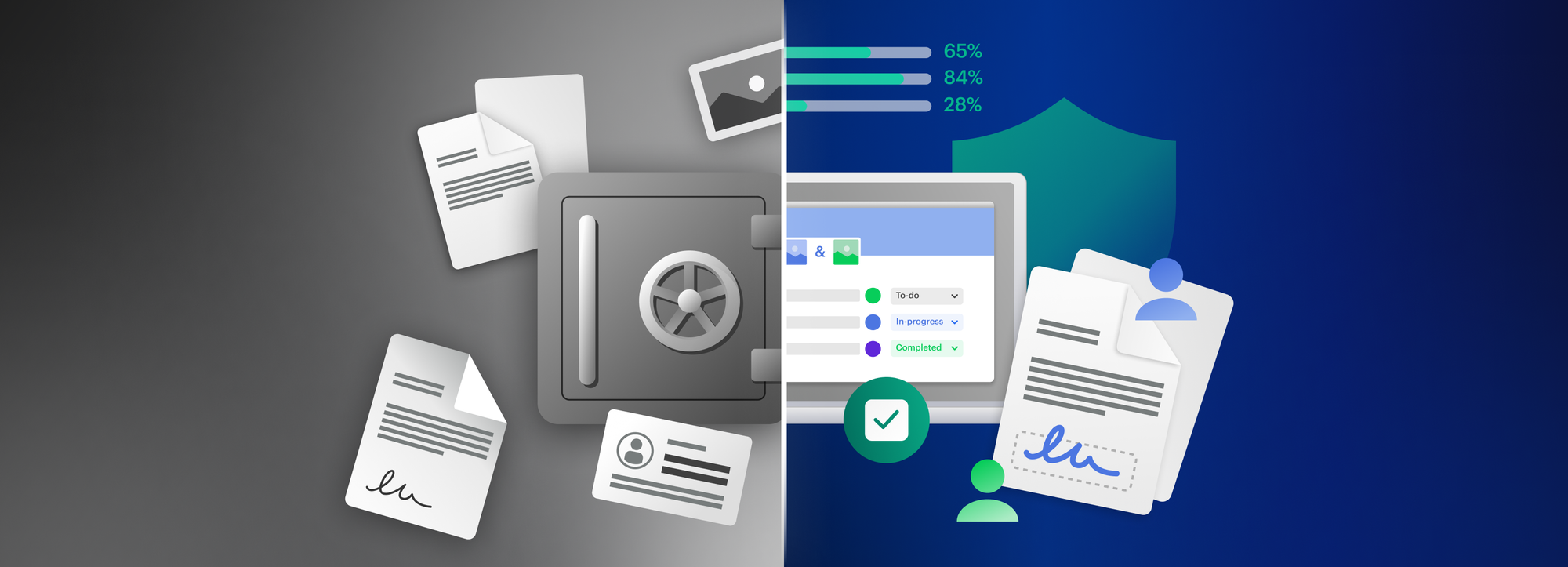Why you need cloud storage with end-to-end encryption

Globally, remote work has changed over the last few years. According to research, 42% of US workers, accounting for more than two-thirds of economic activity, work from home full time. In the European Union, the numbers are similar, with research finding close to 40% of those currently working in the EU began to telework full time as a result of the pandemic while only 15% of employees had ever worked remotely before.
To enable this changing workforce, companies adopted more cloud resources, including cloud storage. This shift created new privacy and security risks since many organizations moved sensitive data away from on-premises locations.
Choosing a cloud storage provider with true end-to-end encryption (E2EE) can mitigate some of these risks while ensuring continued productivity.
What are the risks involved with cloud storage?
Cloud storage enables your workforce and reduces costs. Subscription models allow you to use what you need without a hefty up-front investment. Simultaneously, you need to be aware of the different risks associated with this model.
Cloud provider stores data
When you use cloud storage, you “rent” space on the cloud provider’s servers. Often, these providers encrypt data-at-rest, but they still have access to the decryption keys. Since you don’t control their actions, data privacy can be at risk.
Data location
Many privacy laws, like the General Data Protection Regulation (GDPR), require you to store personal data in the customer’s country of residence. Cloud providers can have servers in multiple countries, so you need to be in control of where you store your data.
Data leakage
Cloud storage makes it easier for your employees to collaborate within your company and with third parties. However, the “share with a link” functionality means that they can also accidentally share information inappropriately. In addition, you need to make sure that the cloud provider doesn’t accidentally expose your data.
User devices
Since people may use either corporate-owned or personal devices to access your cloud storage, you need to make sure that this doesn’t increase your risks. For example, you need to connect users to their devices and be able to revoke access if they lose a device. You may also want to limit the ability for people to use their mobile devices to mitigate malware risks.
How does cloud encryption work?
Cloud encryption uses advanced mathematical algorithms that make data unusable and unreadable to anyone who doesn’t have the key that transforms it back to readable plaintext. Only authorized users with the decryption key can decode the data. You have control over the keys, generating them and sharing them with trusted parties whose identities you have established and verified.
When you evaluate an encrypted cloud storage provider, you should look for the following features:
• Compatibility with cloud platforms used in your current digital environment
• Mobile application that enable people to use their smartphones and tablets securely
• Multiple encryption layers and administrative control options
While cloud storage providers encrypt data, you need to make sure that you are the only one who knows your decryption key. This way, you can store sensitive data in a secure manner while complying with data privacy regulations.
What are the benefits of cloud end-to-end encryption?
Encrypted cloud workspaces for collaboration provide proactive security and privacy capabilities while enabling productivity. End-to-end encryption protects data-at-rest and in-transit for continuous security and privacy throughout the data lifecycle.
Share files securely
Sharing folders and files enables employees to collaborate more efficiently and effectively. An end-to-end encrypted secure file sharing solution protects data security and privacy by transforming it on the sender’s device and decrypting it only once an authorized and authenticated user receives it.
When implementing an E2EE secure cloud, you should look for one that provides encrypted sharing links. This way, you can maintain the same control over data whether it’s shared internally or with third parties like contractors or customers.
Access documents securely
In the cloud, your fundamental security control is managing user access. By ensuring that people only have the access they need to complete job functions, you mitigate risks associated with accidentally seeing or sharing sensitive information.
Mitigate data breach risks
Since end-to-end encryption makes data unusable and unreadable to anyone without the decryption key, it provides a last line of security and privacy defense. Even if attackers successfully steal the data, they won’t be able to do anything with it. An E2EE solution should use a strong encryption algorithm so attackers can’t compromise the data.
Comply with data protection laws
Most data protection laws require encryption as a technical control for mitigating data privacy and security risks. Using an E2EE cloud enables you to prove compliance. Further, you should look for one that enables you to:
• Define security policies
• Monitor devices and user statistics
• Revoke user and device access
Cloud end-to-end encryption best practices
Whether you want to protect data to mitigate data breach or compliance violation risks, you want to implement a cloud storage solution with end-to-end encryption using best practices.
Identify all sensitive data
Malicious actors and data protection laws focus on personal information. You should start by identifying and encrypting all personally identifiable information (PII) like:
• Names
• Birth dates
• Governmental identification numbers, like social security numbers
• Telephone numbers
• Email addresses
• Payment card information
• Healthcare information
In addition, you should identify sensitive corporate information like:
• Financials
• Intellectual property
• Human resources documents
Verify users and devices
In a distributed workforce, you need to make sure that you authorize and authenticate all users and devices. Every device should be connected to an authorized user. Further, you should implement multi-factor authentication (MFA) prior to providing access. MFA should also be used with external third parties, requiring them to access with a known email address or input a verification code sent by email.
Limit access
With an E2EE cloud storage solution, you can create role-based access controls (RBAC) that enable you to limit access according to the principle of least privilege. It’s also a good idea to integrate your E2EE cloud with your Active Directory or single sign-on (SSO) to maintain consistency.
Encrypt data-at-rest and in-transit
End-to-end encryption is a secure communications model that encrypts both stored data and data traveling between users. A solution should encrypt data on users’ devices, in the cloud, and data that’s sent by email.
Use zero-knowledge solutions
A true zero-knowledge solution never has any visibility into or access to your sensitive data. This means that it:
• Never sends keys to its servers in an unencrypted format
• Never stores user passwords
• Cannot access shared keys
• Uses cryptographic authentication to ensure file content integrity, even if a malicious actor compromises its systems
Tresorit: Secure Cloud with End-to-End Encryption
Tresorit’s end-to-end encrypted cloud storage and secure workspace lets you protect data security and privacy. Our zero-knowledge solution ensures that we never have access to or visibility into any sensitive data, including files, passwords, or encryption keys.
You can use our encrypted cloud to share files and folder securely, whether internally or externally. We offer email encryption and eSignature add-ons so that your employees can collaborate with one another, contractors, and customers securely in an integrated, secure ecosystem.
To help you meet mission-critical data protection compliance requirements, we provide a robust set of administrative controls so that you can govern user and device access to folders and files. You can use our reports as audit documentation, reducing compliance costs and enhancing governance.
For more information about using Tresorit for your organization, contact us today.






